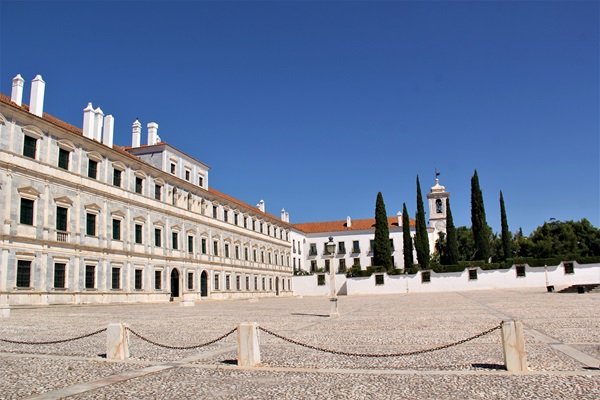There are many names attributed to Vila Viçosa, including: "Princess of Alentejo,” and Calipole (It’s ancient name the Greek Kallipolis, from kallos, "beautiful”, and polis, "city”). Vila Viçosa is also a marble town, and was a thriving aristocratic seat in the Portuguese Renaissance.” Also known as Portugal’s "marble capital” because of its "white gold” which so beautifully decorates the streets and houses of this village and is exported all over the planet.
Celts, Romans, Visigoths, Muslims and finally Christians from the North walked these streets, And the place where Vila Viçosa is today became part of Portugal at the beginning of the 13th century.
Not surprisingly, the history of Vila Viçosa is closely linked to the history of Portugal and the House of Bragança. The Dukes of Bragança Renaissance made the town their seat in the 15th century, and that shaped not only the architecture and local culture. The Dukes of Bragança were the richest and most powerful family in Portugal at the time and made their residence here, first in Alcáçova do Castelo, then in their grand palace in Reguengo, built in 1501.

The Dukes of Bragança were the last Royal Dynasty in Portugal from 1640 to 1910. Today the magnificent Ducal Palace of Vila Viçosa is a museum palace, where the memory of the House of Bragança and the last kings of Portugal is on display. From here King D. Carlos left with his family for Lisbon on the day he was murdered February 1, 1908.
The town offers other interesting urban landscapes, full of marble and orange trees, flora and gardens where Renaissance and Baroque architecture stands out in churches, convents and noble houses.
There is a Medieval Castle, built in the 13th century, and the Renaissance Fortress, the scene of bloody battles in several wars with the Spanish. Also there is a richness of religious heritage, with churches and convents including the Sanctuary of the Patroness of Portugal with the historic image of Nossa Senhora da Conceição, crowned as Queen of Portugal in 1646. This church dates from the 15th century and is richly decorated with marble, gilded carving and tiles.
Just outside the castle walls, the Manueline Pelourinho, the Porta dos Nós, the marble fountains and urban statuary invoking illustrious people who were born and lived here, with so many stories and legends to tell.
And there is much more... the popular and religious festivals: Easter with the tradition of its processions of great devotion. In September, the Festivities of the Capuchos combine the religious festival with the fun festival.
In terms of cuisine, with traditional dishes of meat, fish and convent sweets (the Tibornas stand out) which can be tasted here.
Come and visit Vila Viçosa with the Marble Route AE on the Pedestrian Walk tour in Vila Viçosa where the watchwords are history, art, heritage and tradition.
Book now: www.rotadomarmoreae.com
Book now: www.rotadomarmoreae.com



